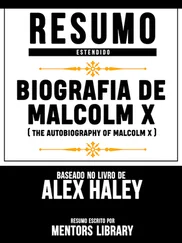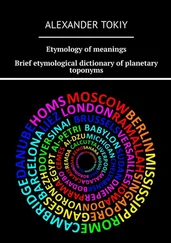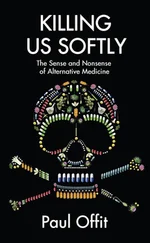Much like thy writing, if men marke it well:
For Nonsence is Rebellion, and thy writing,
Is nothing but Rebellious Warres inciting. 48
If this were the only surviving specimen of nonsense poetry, it would be tempting to take this comment and construct on its foundation a whole theory about the political significance of nonsense as an expression of the satirical-political ‘world turned upside-down’ theme during the Civil War. That this theme appealed to Taylor is evident from a poem he wrote to accompany a woodcut (of which it provides a full and accurate description) in 1642:
This Monstrous Picture plainely doth declare
This land (quite out of order) out of square.
His Breeches on his shoulders do appeare,
His doublet on his lower parts doth weare;
His Boots and Spurs upon his Arms and Hands,
His Gloves upon his feet (whereon he stands)
The Church or’eturnd (a lamentable show)
The Candlestick above, the light below,
The Cony hunts the Dogge, the Rat the Cat,
The Horse doth whip the Cart (I pray marke that)
The Wheelbarrow doth drive the man (oh Base)
And Eeles and Gudgeon flie a mighty pace. 49
But possessing, as we do, the earlier history of nonsense poetry, we can see that it was a literary phenomenon long before it became an ostensibly political one; Taylor’s remarks about nonsense and rebellion at the end of poem 15 are just another example of his talent for turning whatever materials he had at hand to an immediate topical use.
This poem was followed by two brief extensions of the same theme (poem 16), added at the start and finish of a pamphlet which Taylor published in the form of a mock-news-sheet in 1648, Mercurius Nonsensicus. These verses are of interest for two other reasons. The first is their curious mixture of literary aims and conventions, which makes them unlike the rest of Taylor’s nonsense output. Some of the lines are examples of the ‘impossibilia’ tradition, which is discussed below (pp. 78–88). At the same time they are a direct parody (again, untypical of Taylor) of a popular poem on man’s mortality:
Like as the damask rose you see,
Or like the blossom on the tree,
Or like the dainty flower of May,
Or like the morning to the day … 50
The second point of interest here is that the original idea for subjecting those trite lines to nonsensical parody seems to have come from another minor poet, Richard Corbet – who was probably, therefore, the third writer of such concentrated nonsense poetry in English. In 1641 a collection of humorous verse had published a similar parody in three stanzas (poem 14); the author’s name was not stated there, but some of the early manuscripts containing this poem ascribe it to Corbet. A later collection, published in 1658, included another nonsense poem (poem 13) under the title ‘A non sequitur, by Dr. Corbet’. Both poems show the evident influence of Taylor, containing some of his own most characteristic images, such as lobsters and bag-puddings; but the second poem is in an elaborate classical form (the Pindaric ode) which Taylor seems never to have attempted. Since the two poems are clearly quite closely connected, their separate attributions to Corbet can be taken as mutually reinforcing evidence of his authorship of both. 51Although he rose to be Bishop first of Oxford (1628) and then of Norwich (1632; he died in 1635), Corbet was best known for his wit and high spirits; Aubrey described him as ‘very facetious, and a good fellowe’. 52He may have read Taylor’s Workes and the first printed version of the mortality poem at roughly the same time (1630); or he may have been familiar with the latter as it circulated, like so much of the poetry of this period, in manuscript. His own nonsense verses had evidently been circulating in this way for many years before they appeared in print.
Also circulating in manuscript were several more or less close imitations of Taylor. One of these (poem 21), which seems never to have been published, appears in a manuscript together with a copy of Taylor’s verses from Jack a Lent : it is so close to Taylor’s style that it could indeed be attributed to him, were it not for the fact that the manuscript attributes it to ‘T. W.’. Another (poem 20) in a much more bitter and scatological vein than anything that survives from Taylor’s own pen, is entitled ‘A sonnett to cover my Epistles taile peece’. This suggests that it was intended to be printed at the end of a dedicatory epistle; but it has not yet been located in any printed work. Two other reasonably successful imitations of Taylor’s style were printed in collections of humorous poetry which appeared in 1641 (poem 22) and 1655 (poem 23); a more elementary fragment in a similar vein appeared in another such collection in 1656 (poem 26). As always with anonymous poems printed in miscellanies of this kind, it is impossible to know for how long they had been circulating, by manuscript or by word of mouth, before they were finally printed.
The one fragment of nonsense by Taylor which seems to have undergone widespread circulation in manuscript (and, evidently, in recitation and memory) was contained in a work published in February 1654, just two months after his death: The Essence, Quintessence, Insence, Innocence, Lye-sence, & Magnificence of Nonsence upon Sence: or, Sence upon Nonsence (poem 17). 53This was Taylor’s longest and most ambitious nonsense performance; only three of its twenty-three pages are not in nonsense verse. (Those three pages contain a doggerel about ‘the death of a Scottish nag’, which includes what is probably the longest list of horse-diseases in English poetry, but is not reproduced in the present collection.) This little volume, as published in 1654, was in fact the end-product of a cumulative process: the first part had been published as Nonsence upon Sence in 1651, and that work had then been reissued in the following year with additional material, under the title Nonsence upon Sence, or, Sence upon Nonsence: Chuse you either, or neither. Curiously, it was the very last set of additional verses, written in the final weeks of Taylor’s life and appearing for the first time in the posthumous Essence of Nonsence upon Sence , that yielded the most popular and enduring of all Taylor’s nonsense poems. One section of this work, beginning ‘O that my wings could bleat like butter’d pease’, recurs in several manuscript copies, usually with ‘lungs’ instead of ‘wings’; together with twenty extra lines, probably by a subsequent imitator, this acquired a separate existence as a nonsense poem (poem 18) and was printed in a popular anthology three years after Taylor’s death. 54(A similar extension or adaptation of Taylor’s last nonsense poem exists, in somewhat fragmentary form, in a manuscript compilation; it is printed here as poem 19.) Two years later, another imitation of Taylor was published in a collection of ‘Such Voluntary and Jovial Copies of Verses, as were lately receiv’d from some of the Wits in the Universities’; this poem, by ‘T. C.’ (poem 24), pays direct homage to Taylor by borrowing one of his most characteristic phrases for its title (‘Upon the Gurmundizing Quagmires …’), and is perhaps the most successful of all the attempts to replicate his style. 55
To follow the history of English nonsense poetry beyond the seventeenth century would be outside the scope of this Introduction. However, one suggestive link can be made between Taylor’s last poem and the genre of nonsense poetry in the nineteenth century. A poem published in 1815 by the minor American author Henry Coggswell Knight, entitled ‘Lunar Stanzas’, has long been recognized as one of the path-breaking works of nineteenth-century nonsense: Carolyn Wells called it ‘among the best examples of the early writers’, and one recent study has described it as ‘one of the most astonishing nonsense-poems of the period’. 56Two lines in this poem,
Читать дальше












